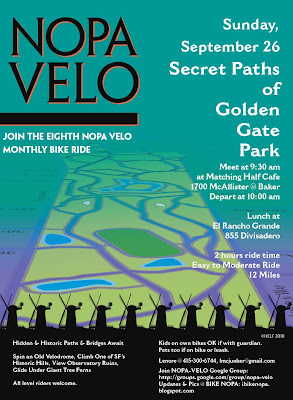
Many fear the simple act of crossing the street...in the crosswalk, with the right-of-way

Masonic neighbors want the speeding stopped
From Rick Boardman, a resident from Hayes & Masonic:
“The speeding situation on Masonic is out of control…Last week, I myself was nearly hit walking across Turk southbound by a driver turning left at (high) speed off the northbound lane of Masonic. Even as a driver, I regularly feel unsafe due to the inappropriate speeds of many cars and the poorly-designed road layout.”
Boardman urged the MTA to implement immediate measures to slow traffic on the downhill side of Masonic where “the signage is very easy to miss.”
From Dale Danley, a resident on Golden Gate Avenue near Masonic
“The principal factor causing the unacceptable safety problems on Masonic is speeding. The speed limit is 25, but speeds frequently exceed that, into the 40s.”
Danley called on the MTA to implement immediate changes:
“Install a sign showing car drivers’ actual speed. Re-time the signal lights: the current sequence of green lights encourages people to reach speeds of 30-35 mph so they can catch all the greens. SFPD should ticket speeding motorists by assigning one officer day shift per week. Repair missing or damaged signs. Implement a bike lane between Ewing Terrace and Fulton Streets by removing the car parking, converting the parking lane to a bike lane, and installing soft hit posts to separate the bike lane from the other traffic.”
From Maria Comstock, a resident on Hayes near Masonic
“As a driver with a 100% clean driving record, I avoid driving and cycling on Masonic whenever possible, as the situation had deteriorated …to the point where I consider it too dangerous to risk. On the occasions when I have driven down the road, 40 mph seems the flow of traffic, however I have yet to see anyone being stopped or the speed limit enforced by the police. The only time I have seen law enforcement on this road has been in response to accidents that would have been avoided had drives not been driving at high speeds or making illegal and dangerous turns into traffic.”
From Elias Zamaria:
“For as long as I have lived in San Francisco, Masonic has been a scary street to bike on, with no convenient way around it. I have had several close calls riding on it. I generally ride on the sidewalk, which I don’t like to do, but in this case I feel it is the only reasonable option.”
From Rachel Sher:
“I have had many near collisions, and I have seen many terrifying altercations between drivers, pedestrians, and cyclists on Masonic on my daily commute to work. Commuting on Masonic is incredibly stressful as I have the daily experience of drivers honking their horns, speeding, and yelling for me and other cyclists and pedestrianst to get out of their way instead of sharing the road.”
Sher recounted her personal connection to the tragic death of Nils Yannick Linke in August. Linke had been visiting a mutual friend, and he borrowed Sher’s bicycle the night he was struck and killed by an allegedly hit-and-run driver on Masonic.
“When I heard of Nils’ death and saw the subsequent pictures of my own bicycle bent out of shape and destroyed on Masonic, I was heartbroken for my friend but also could not help but envision myself in Yannick’s place.”
From Ryan Kushner and Amanda Ravenhill:
Ryan was a first-hand witness to the recent death of Yannick Linke.
“I bike everywhere in this city, and do so to reduce my carbon footprint and get exercise. The reward for this, as we have seen, can be death. Masonic desperately needs a bike lane.”
From Dan Nguyen-Tan, North Panhandle Neighbor:
“Masonic Avenue is the poster child of a bad street that doesn’t work for anyone…the conditions are bad especially between Fell and Geary, with fast moving vehicles, confusing lane changes, and topography that encourages unsafe driving….I wholeheartedly support OPTION C that will be presented at the next community meeting. The addition of a median will encourage everyone to move slower. Parking removal will allow Masonic to become a safer and more accessible north/south bicycle corridor.
Recipients of the emails from Masonic area residents:
- Bond Yee, Ricardo Olea, and Javad Mirabdal of the SFMTA
- Supervisors Ross Mirkarimi, Eric Mar, and Michela Aliota-Pier
Community Workshop #3
Thursday, September 30, 2010
6:30 to 8:30 pm
San Francisco Day School
350 Masonic at Golden Gate (enter at Golden Gate)
bike parking indoors, Muni #43 and nearby Muni #5 options
For detailed project information: www.sfmta.com/masonic
Contact project manager, Javad Mirabdal: javad.mirabdal@sfmta.com
(415) 701-4421
For other stories in the A Better Masonic series, check here.



































